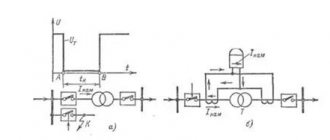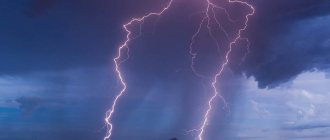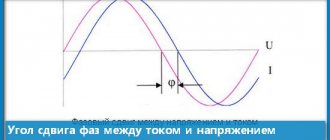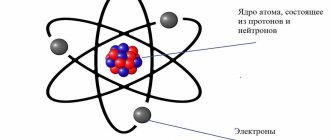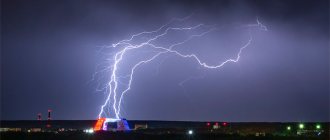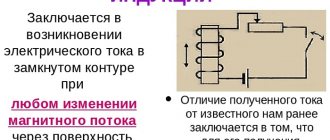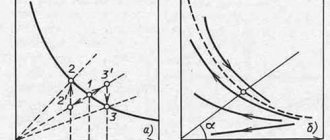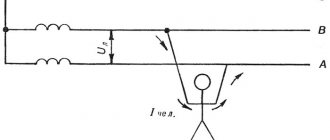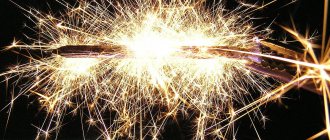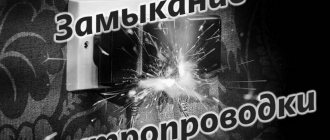In old books about the basics of electronics, they liked to compare electric current to running water. It was there that many read that current flows from plus to minus. Later it turned out that the current actually flows in the opposite direction, and in general, plus or minus is all conditional.
The creator of all this confusion was the American Ben Franklin - the man who used a kite to bring electricity to the earth. He argued that lightning was not a sign of the wrath of the gods, but merely slightly larger and more dangerous electrical sparks. To confirm his words, he decided to fly a kite during a storm and, with its help, catch several huge “sparks” in a jar. In the end, this whole affair led to the invention of the lightning rod.
Soon after, Franklin proposed that electricity had two natures, which they called positive (+) and negative (-). It is important to note that at that time (around 1750) elementary particles were not yet known, so electricity was compared to water. So, if a given object had a lot of electricity, it would become positively charged. In turn, the deficit was negative. According to Franklin, when two oppositely charged objects come together, an "electric fluid" naturally flows from positive to negative charge, like a waterfall flowing from top to bottom. This theory made sense and was confirmed by numerous experiments by independent scientists.
In subsequent years, research in the field of electricity accelerated. Methods for transmitting electricity through wires were discovered, the phenomenon of electromagnetism was described, and new electrical devices were created, such as the battery and the light bulb. Scientists understood electricity better and better, and the theory of electric fluid no longer corresponded to this understanding. But the final blow came about 150 years later, when the electron, the smallest charged particle, was discovered. This achievement was direct evidence that:
- Electricity is not a liquid, but physical particles that carry a charge with them,
- A negative charge is not a “lack of electrical fluid,” but an excess of electrons.
- A positive charge is not an “excess of electrical fluid,” but a lack of electrons.
By bringing two oppositely charged objects together, electrons jump from the negatively charged object to the positively charged one. Electricity flows, contrary to Franklin's assumptions, in a different direction.
Imagine the irritation of physicists at the time when they discovered that thousands of books and publications written over more than 100 years were based on an incorrect assumption. On the one hand, it is no longer possible to rewrite everything, but after the discovery of the electron, it will still not be possible to pretend that the direction “from plus to minus” was correct.
Yes, it's possible that electrons flow from negative to positive, but we still can't see those individual particles. An ordinary light bulb also lights up, no matter how it is connected to the battery. So does it make sense to turn the world of science upside down? Should we just agree that electricity flows the way it does now? No one seems to notice the difference.
When Franklin's story was told, the term "electric current" was never used. This is because such a concept simply did not exist at that time, and it took another 50 years of hard work by brilliant minds to discover “charge mobility”. The breakthrough came only in the early 19th century, thanks to a new field of science called electrochemistry. This not only made it possible to create a continuous flow of electric charge, but also sowed the first seed of doubt among fans of the theory of the flow of electricity from plus to minus.
Immersing two different metal plates in an acid solution caused electricity to flow between them. But the nature of this phenomenon was unknown until Faraday decided to study it more closely. During the experiment, he noticed that one of the plates literally dissolved before his eyes, and a metallic coating appeared on the other. The flow of charge caused a flow of matter, and Faraday correctly deduced that since the plates were made of two different metals, there must have been a flow of two different charges in the solution at the same time - negative and positive, which he called ions.
At first it was believed that "moving electricity" was completely different from "static electricity", and the two areas were treated separately. But that was just the beginning of the problem. The following years brought even more intriguing discoveries. By studying the flow of charge in wires, they began to notice the relationship between the voltage generated, the size of the conductor and the temperature to which it heats up. The idea of resistance arose, thanks to which it was possible to determine the amount of electricity flowing. In turn, physicist Ørsted noticed that electricity flowing through a wire interferes with the operation of the compass - thus another, completely new branch of electrical engineering was born - electromagnetism.
Each subsequent discovery required the creation of new mathematical equations and formulas. Gradually, relationships between various electrical quantities began to be noticed. The laws of Joule, Ohm, Kirchhoff and electromagnetic induction were created. The flow of electricity could cause phenomena that Franklin had never imagined. Research became more and more precise, and all discoveries had to be somehow expressed, measured and compared. At one point there were 4 completely separate electrical flow systems in the world. In order not to get confused in all this, it was necessary to somehow standardize all this.
Electricity
Electric current flows through the wires. Moreover, it “flows”, almost like water. Let's imagine that you are a happy farmer who decided to water his garden with a hose. You opened the tap slightly, and water immediately ran through the hose. Slowly, but still she ran.
The jet force is very weak. Then you decided that more pressure was needed and opened the tap to its fullest. As a result, the stream will flow with such force that not a single tomato will be left unattended, although in both cases the diameter of the hose is the same.
Now imagine that you are filling two buckets from two hoses. Green has stronger pressure, yellow has weaker pressure. The bucket into which water is poured from a hose with strong pressure will fill faster. The thing is that the volume of water for an equal period of time from two different hoses is also different. In other words, a much larger number of water molecules will run out of the green hose than from the yellow hose in the same period of time.
If we take a conductor with current, the same thing will happen: charged particles will move along the conductor, just like water molecules. If more charged particles move along the conductor, the “pressure” will also increase.
- Electric current is the directed movement of charged particles.
The Essence of Electricity
Random movement of electrons in a body always exists. It's called thermal. Due to the fact that the electron has a small mass, the speed of the charge carrier is quite high. At room temperature it is approximately 100 km/s. You can create directional movement and generate current yourself with the help of simple objects. To do this you will need to prepare:
- 2 electrometers - devices that allow you to detect electrical charges.
- Conductor.
- Sheet of plastic.
- Paper.
After rubbing the paper against the plastic, the objects will be electrified. Charges of the same sign will begin to accumulate on them. This can be checked by holding a plastic sheet close to the electrometers connected by a conductor. The arrows on the instruments will deviate in the same direction. This happens due to the accumulation of particle carriers. If the conductor is removed, the charges cannot return, meaning both electrometers will remain charged.
You can check how much charge is in the devices using an ebonite stick. It is known that if you rub it on silk, negative particles accumulate on it. By bringing it to the electrometers, you can find that on one the needle will return to its original state, and on the second it will deviate even more. In other words, the first device will be characterized by an excess of electrons, and the second - by their deficiency.
Now if you connect 2 oppositely charged electrometers with a conductor, the arrows will return to zero. What happened can be explained by the existence of an electric field. Under its influence, elementary charge carriers begin to move in the conductor. From a place where there are more of them, they move to where there are fewer of them. This is the directional movement of electric charges, that is, electric current.
So, when oppositely charged objects are connected by a conductor, a directed movement of electrons occurs. Scientists learned about the existence of electric current at the end of the 18th century. But electrons were discovered only in the 19th century (1897). Physicists, when they received electric current, understood that the movement of charges was occurring, but they did not know what their nature was, so they decided to take the movement of positive particles as the direction of the electric current. This decision, as it turned out later, turned out to be not entirely correct.
Current strength
There immediately arises a need for a quantity with which we will measure the “pressure” of the electric current. Such that it depends on the number of particles that flow through the conductor.
Current strength is a physical quantity that shows how much charge has passed through a conductor per unit time.
How is current strength indicated?
The current strength is indicated by the letter I
| Current strength I = q/t I - current strength [A] q - charge [C] t — time [s] |
Current strength is measured in amperes. The unit of measurement was chosen for a reason.
Firstly, it is named after the physicist André-Marie Ampère, who studied electrical phenomena. And secondly, the unit of this quantity was chosen based on the phenomenon of interaction of two conductors.
Here, unfortunately, it is impossible to draw an analogy with a water supply system. Hoses with water do not attract or repel each other close to each other (which is a pity, it would be funny).
When current flows through two parallel conductors in the same direction, the conductors attract each other. And when in the opposite direction (along the same conductors) they repel.
The unit of current 1 A is taken to be the current at which two parallel conductors 1 m long, located at a distance of 1 m from each other in a vacuum, interact with a force of 0.0000002 N.
Task
Find the current strength in the circuit if a charge equal to 300 mC passes through it in 2 seconds.
Solution:
Let's take the formula for current strength
I = q/t
Let's substitute the values
I = 300 mC / 2 s = 150 mA
Answer: the current in the circuit is 150 mA
To remember the theory well, you need a lot of practice. The classic physics course for grade 10 at the Skysmart online school is an excellent opportunity to practice solving problems.
Why you need to know the history of physical discoveries
Many researchers tried to explain the nature of electrical phenomena long before the discovery of the electron (1897). For the first time, the American physicist Benjamin Franklin came to understand the existence of two types of charges - positive and negative - in 1747. Based on his observations, he suggested (hypothesized) that there is some kind of “electrical matter” consisting of small, invisible particles. He was the first to introduce the designation for electric charges “−” and “+”. Franklin proposed that if a body is filled with electrical matter, then it becomes positively charged, and if it loses electricity, then it becomes negatively charged. If the circuit is closed (connected), the positive charge will flow to where it does not exist, that is, to the “minus”. This fruitful hypothesis became popular, gained recognition among scientists, and was included in reference books and textbooks.
Of course, after the discovery of a negatively charged electron, this “inconsistency” between the real direction of motion and the previously generally accepted one was discovered. However, the global scientific community decided to leave in force the previous formulation about the direction of the current, since in most practical cases this does not affect anything.
If necessary, to explain individual physical effects in semiconductors and artificial materials (heterostructures), the current direction of electron motion is taken into account. Benjamin Franklin is also famous as an outstanding politician, diplomat and writer
He is one of the authors of the US Constitution. In recognition of Franklin's service, the $100 bill has featured his portrait on the $100 bill since 1914.
Benjamin Franklin is also famous as an outstanding politician, diplomat and writer. He is one of the authors of the US Constitution. In recognition of Franklin's service, the $100 bill has featured his portrait since 1914.
Rice. 3. Image of a 100 US dollar bill with a portrait of Benjamin Franklin.
Conductors and dielectrics
Some divide the world into black and white, while we divide it into conductors and dielectrics.
- Conductors are materials that conduct electric current. The best conductors are metals.
- Dielectrics are materials that do not conduct electric current. Easy!
| Conductors | Dielectrics |
| Copper, iron, aluminum, tin, lead, gold, silver, chromium, nickel, tungsten | Air, distilled water, polyvinyl chloride, amber, glass, rubber, polyethylene, polypropylene, polyamide, dry wood, rubber |
Just because a dielectric doesn't conduct electricity doesn't mean it can't store charge. The accumulation of charge does not depend on the ability to transfer it.
The importance of electron movement in an electrical circuit
Understanding how current flows in a circuit is necessary when drawing up a graphical representation of the arrangement of electronic parts, such as a diagram
It is important to understand where the current flows from in order to correctly position on the circuit and then connect various radio-electronic elements. If for such radio components as a capacitor, resistor, the polarity of the connection does not matter, then a semiconductor transistor,
The diode must be placed on the circuit and then powered, taking into account the direction of current flow, otherwise they and the device assembled using them, the electronic unit, will not function correctly.
Thus, knowledge of the physical essence of the direction of flow of charged particles in a conductor, electrolyte, semiconductor will allow anyone not only to expand their horizons, but also to apply it in practice when installing electrical wiring, soldering various electronic components and circuits. Also, such information will help you understand why a breakdown of an electrical appliance occurred, how to fix it and prevent it in the future.
Current direction
Previously, in physics textbooks they wrote this: once upon a time they decided that the current was directed from plus to minus, and then they found out that electrons flow through the wires. But these electrons are negative, which means they cannot go to minus. But since we’ve already agreed on the direction, let’s leave it as it is. The question then arose for everyone: why can’t the direction of the current be changed? But no one received an answer.
Now they write it a little differently: positive particles flow along the conductor from plus to minus, and the current is directed there. No one has any questions here.
| So which version is correct? Actually, both. The charge carriers in each type of material are different. In metals these are electrons, in electrolytes they are ions. Each type of particle has its own signs and need to run to the oppositely charged pole of the current source. We will not choose the direction of current for each type of material in order to solve the problem! Therefore, it is customary to direct the current from plus to minus. In most school course problems, the direction of the current does not play a role, but there is that insidious minority where this point will be very important. Therefore, remember - we direct the current from plus to minus . |
Movement of particles in various conductors
Electric current can occur not only in metals, but also in other substances. Moreover, they can be in different states of aggregation. To better understand the topic, it is worth indicating the movement of current in liquids, gases and solids:
- Metals have a large number of free electrons, which are the main source of electric current.
- Electrolytes are liquids that can conduct electric current. This group of conductors includes solutions of salts, acids, and alkalis. Once in water, the molecules of all these substances are split into ions - charged individual atoms or groups of them. Ions can have a positive (cations) or negative (anions) charge. It is due to their directional movement that an electric current arises in solutions.
- In plasma and gases, electric current causes the movement of positive ions and electrons that have a negative charge.
- In a vacuum, current appears due to electrons escaping from the surface of the metal.
The current that arises as a result of the movement of charged particles inside bodies relative to a specific medium is called conduction current.
There is also a definition of convection electric current, which is the movement of macroscopic particles. An example of convection current is raindrops during lightning.
Current source
The water in the hose comes from a water supply, a spring with water in the ground - in general, not from nowhere. Electric current also has its own source.
The source can be, for example, a galvanic cell (a conventional battery). A battery works based on chemical reactions inside it. These reactions release energy, which is then transferred to the electrical circuit.
Any source necessarily has poles - “plus” and “minus”. The poles are its extreme positions. Essentially the terminals to which an electrical circuit is connected. Actually, the current flows from “+” to “-”.
Reasons for appearance
Charged particles begin to move due to the action of various power sources. These include batteries, accumulators, generators and other devices capable of converting all kinds of energy into electrical energy. During these transformations, the law of conservation of energy is clearly manifested. The particles begin to move at the moment when the electrical circuit is closed, which leads to the appearance of an electric field in the conductor.
It is this that has a certain effect on free particles. During research, scientists found that every source of electric current has an electromotive force (EMF) . It should be remembered that electrons do not appear due to the power source, but are present in the conductor material. They begin to move under the direct influence of the electric field, since they are not connected by atomic bonds and are free.
An example is a closed system of pipes in which water is pumped by a pump. Depending on the size of the pipes and the number of branches, the liquid will move through them at different speeds.
All these properties are inherent in the flow of electric current, which varies depending on the cross-section of the conductors.
Ammeter
We know where the current is directed, how the current is measured, how to calculate it, knowing the charge and the time during which this charge has passed. All that remains is to measure.
A device for measuring current is called ammeter . It is included in an electrical circuit in series with the conductor in which the current is measured .
Ammeters come in very different operating principles: electromagnetic, magnetoelectric, electrodynamic, thermal and induction - and these are just the most common.
We will only consider the principle of operation of a thermal ammeter, because to understand the principle of operation of other devices it is necessary to know what a magnetic field and coils are.
The thermal ammeter is based on the property of current to heat wires. It is designed like this: a thin wire is attached to two fixed clamps. This thin wire is pulled down by a silk thread connected to a spring. Along the way, this thread loops around the fixed axis on which the arrow is attached. The measured current is supplied to the fixed clamps and passes through the wire (arrows in the figure show the current path).
Under the influence of current, the wire will heat up slightly, causing it to elongate, as a result of which the silk thread attached to the wire will be pulled back by a spring. The movement of the thread will turn the axis, and therefore the arrow. The arrow will indicate the measurement value.
Flow in an electrical circuit
An electrical circuit is designed to be useful. For example, turning on the lights, making the engine spin, heating the room using spiral heaters
But in principle, it doesn’t matter what the benefit of electricity will be, the main thing is that it is supplied to consumers
Thus, the simplest electrical circuit consists of three parts:
- source - an element that creates an electric field;
- conductor - a substance that ensures the circuit is closed for the passage of current;
- consumer - a load that converts electricity into useful work.
It’s easy to guess where and how the current will flow in a simple circuit. It will flow from the positive terminal of the voltage source, pass through the load and arrive at the negative terminal. But real electrical circuits usually contain many more elements. Their largest number is determined by the power of the current source. After all, if consumption exceeds generation, there simply will not be enough energy to do useful work.
It is customary to depict a circuit using an electrical diagram. It consists of branches, nodes and conventional images of radioelements. With its help, it is easy for a specialist to understand the purpose of the circuit, at which points there will be a particular voltage and current strength.
For example, consider a simple problem designed for seventh grade students. The figure shows a diagram. It is necessary to determine the direction of the current in all areas. To solve the problem correctly, you need to indicate the poles in the current source. Then place arrows from the plus so that they ultimately show the path to the minus. At the same time, in the nodes of the circuit it is necessary to mark the places where the electric current diverges or, conversely, converges.
Where is it used and what are the advantages of AC and DC current?
Various tasks may require the use of both AC and DC power. Each type of current has its own disadvantages and advantages.
Alternating current is most often used when there is a need to transmit current over long distances. It is more expedient to transmit such current from the point of view of possible losses and the cost of equipment. That is why most electrical appliances and mechanisms use only this type of current.
Residential buildings and enterprises, infrastructure and transport facilities are located at a distance from power plants, so all electrical networks are alternating current. Such networks power all household appliances, industrial equipment, and train locomotives. There are an incredible number of devices operating on alternating current, and it is much easier to describe those devices that use direct current.
Direct current is used in autonomous systems, such as on-board systems in cars, aircraft, ships or electric trains. It is widely used in powering microcircuits of various electronics, in communications and other equipment where it is necessary to minimize the amount of interference and ripple or eliminate them completely. In some cases, such current is used in electric welding work using inverters. There are even railway locomotives that run on DC systems. In medicine, this current is used to introduce drugs into the body using electrophoresis, and for scientific purposes to separate various substances (protein electrophoresis, etc.).
